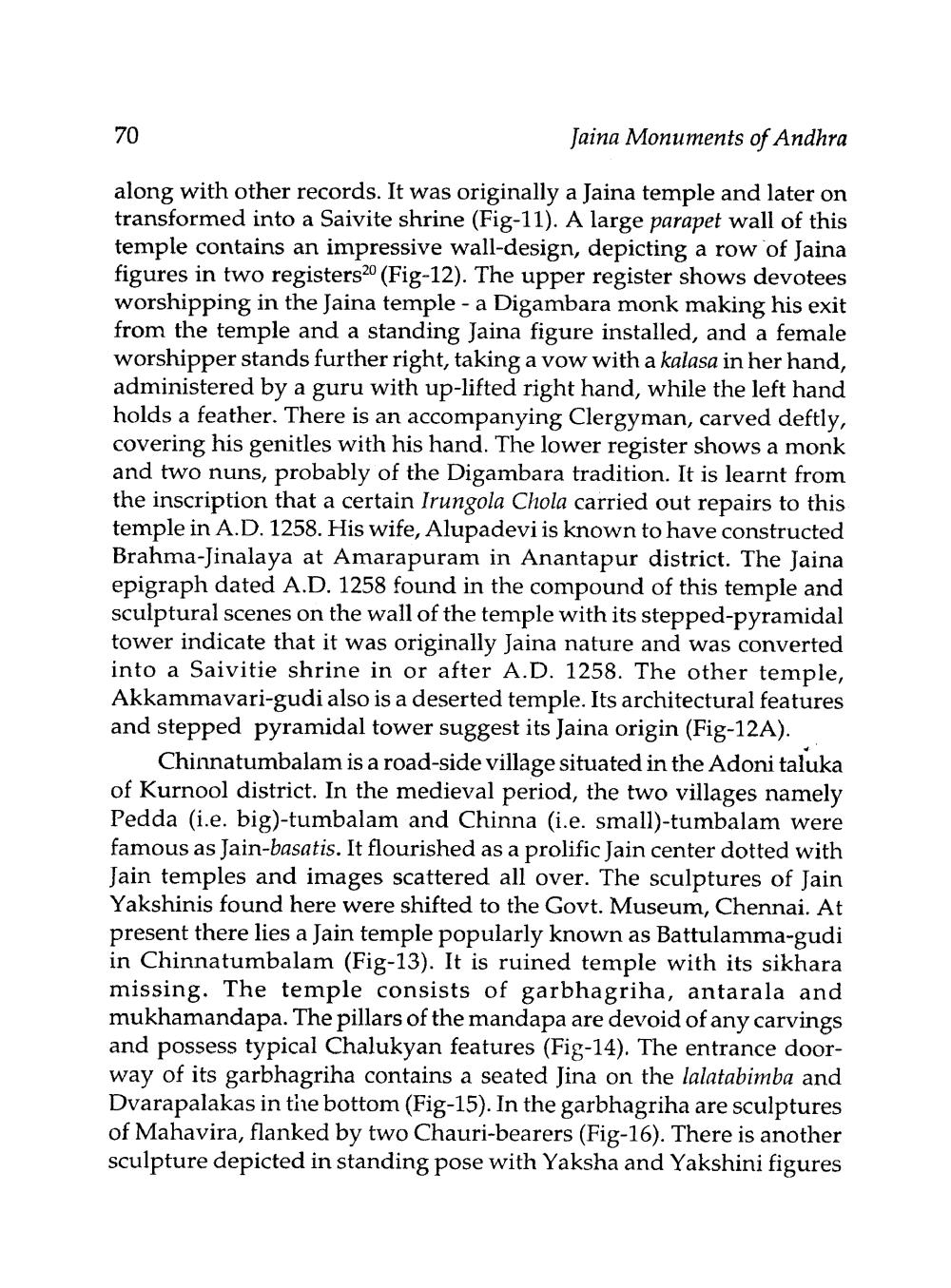________________
70
Jaina Monuments of Andhra
along with other records. It was originally a Jaina temple and later on transformed into a Saivite shrine (Fig-11). A large parapet wall of this temple contains an impressive wall-design, depicting a row of Jaina figures in two registers 20 (Fig-12). The upper register shows devotees worshipping in the Jaina temple - a Digambara monk making his exit from the temple and a standing Jaina figure installed, and a female worshipper stands further right, taking a vow with a kalasa in her hand, administered by a guru with up-lifted right hand, while the left hand holds a feather. There is an accompanying Clergyman, carved deftly covering his genitles with his hand. The lower register shows a monk and two nuns, probably of the Digambara tradition. It is learnt from the inscription that a certain Irungola Chola carried out repairs to this temple in A.D. 1258. His wife, Alupadevi is known to have constructed Brahma Jinalaya at Amarapuram in Anantapur district. The Jaina epigraph dated A.D. 1258 found in the compound of this temple and sculptural scenes on the wall of the temple with its stepped-pyramidal tower indicate that it was originally Jaina nature and was converted into a Saivitie shrine in or after A.D. 1258. The other temple, Akkammavari-gudi also is a deserted temple. Its architectural features and stepped pyramidal tower suggest its Jaina origin (Fig-12A).
Chinnatumbalam is a road-side village situated in the Adoni taluka of Kurnool district. In the medieval period, the two villages namely Pedda (i.e. big)-tumbalam and Chinna (i.e. small)-tumbalam were famous as Jain-basatis. It flourished as a prolific Jain center dotted with Jain temples and images scattered all over. The sculptures of Jain Yakshinis found here were shifted to the Govt. Museum, Chennai. At present there lies a Jain temple popularly known as Battulamma-gudi in Chinnatumbalam (Fig-13). It is ruined temple with its sikhara missing. The temple consists of garbhagriha, antarala and mukhamandapa. The pillars of the mandapa are devoid of any carvings and possess typical Chalukyan features (Fig-14). The entrance doorway of its garbhagriha contains a seated Jina on the lalatabimba and Dvarapalakas in the bottom (Fig-15). In the garbhagriha are sculptures of Mahavira, flanked by two Chauri-bearers (Fig-16). There is another sculpture depicted in standing pose with Yaksha and Yakshini figures




